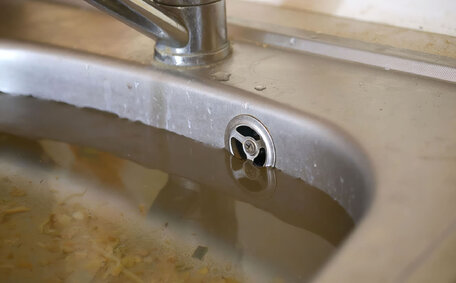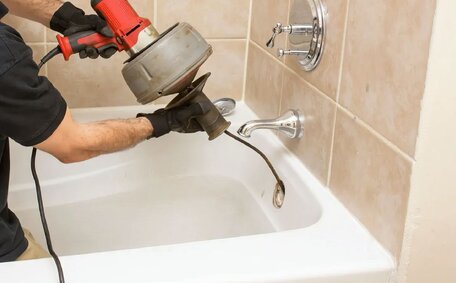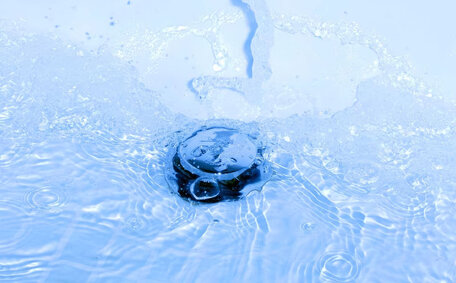Introduction to Hot Water System Drain Valves
The majority of Australian homes rely on gas and electric water heater systems for everyday use. A crucial component of any hot water system is the drain valve, which allows your water to be drained from the system for maintenance or repairs.
Drain valves are essential as they allow access to the water heater’s inner tank to remove sediment buildup. They also facilitate draining the tank if repairs or replacement are needed. Regular maintenance of your drain valve is essential for peak performance and extended life of your water heater.
Understanding your water heater’s drain valve and performing routine inspections can prevent future problems. Routine inspections and troubleshooting problems early on can prevent more costly repairs down the road. We’ll explore how to fix common hot water drain valve problems and what actions you can take.
Common Drain Valve Issues to Watch Out For
Some of the most common issues that can occur with hot water system drain valves include:
- Dripping/Leaking Drain Valve - A drip from the drain valve often signals a worn seal or internal component failure. If left unaddressed, a worsening leak could lead to substantial water damage or mould.
- Pressure Relief Valve Failure - Safety valves release excess pressure to prevent system overload. If the valve fails to close properly afterwards and hot water goes out, this will continuously pose a safety risk.
- Temperature Pressure Relief Valve Failure - Similar to the pressure relief valve, this safety release valve opens when either too much pressure or excess temperature is detected. Failure to re-close will result in leaking water.
- Inability To Open/Close Valve - Mineral deposits, corrosion and sediment can prevent the valve from operating smoothly. Applying too much force to the valve can cause it to stop working correctly.
- Loud Banging/Hammering Noises - Often indicative of water hammer, which occurs when valves rapidly open/close. This can stress pipes and joints over time, and result in leaks.
If you experience any of these common hot water drain valve issues, have a licenced plumber inspect and repair it before further problems arise. Our experts can resolve any issue with your hot water system’s drain valve.
Inspecting Your Drain Valve for Problems
When experiencing issues with your hot water system’s drain valve, it’s important to thoroughly inspect it for any signs of problems. Here are the steps for valve water management to take:
- Before inspection, turn off power to your electric heater or shut off the gas for your gas system. If using a gas model and the pilot light goes out, ensure it is fully extinguished.
- Find the drain valve located at the bottom your hot water tank. It will have a valve handle to open/close the valve.
- Examine the area for any leaking water, ensuring a consistent water flowing pattern, drips, moisture or mineral deposit build-up around the valve and fittings.
- Gently operate the valve handle to check that it freely opens and closes without forcing, to prevent damage.
- Examine the valve’s interior once opened and check hot water flow for any signs of sediment or buildup that might lead to blockages.
- If you find any signs of wear, damage or issues operating the valve, contact a licenced plumber to inspect and repair it.
Early detection and resolution of drain valve issues through regular checks can save you from future costly repairs. If you notice any issues with your hot water system’s drain valve, reach out to the professionals at Hornsby Plumbing.
When to Call a Professional Plumber
If you notice any of the following signs, it may indicate that a professional plumber is needed for your drain valve issues:
- You’ve inspected the valve and system but can’t determine the cause of leaks, dripping or other problems
- The drain valve is stuck open/closed and won’t operate with reasonable force
- There are loud banging noises coming from the pipes whenever hot water is used
- You have hot water pressure that’s too low throughout your home
- The water temperature fluctuates drastically without adjustments
- Sediment buildup in valve and pipes persists after multiple draining attempts
Attempting complex repairs can lead to scalding or water damage without the proper know-how. Our Hornsby Plumbing experts have the skills, knowledge, and tools to diagnose and solve any drain valve problem.
Contact our team for any issues—we service all models to restore optimal hot water function.
Replacing a Faulty Drain Valve
A faulty drain valve that cannot be repaired may require a complete replacement. Here are the steps involved:
- Ensure safety by turning off power to your electric system or gas to your gas hot water system.
- Turn the valve to switch off the hot water supply to the system entirely.
- Open a hot tap in the home to ensure there’s no cold water pressure buildup in the system.
- Position a bucket underneath the drain valve to collect any water released upon removal.
- Using an adjustable wrench, turn the faulty valve counterclockwise to remove it.
- Remove the old plumber’s tape and thread sealant around the threads if still present.
- Wrap new plumber’s tape around the threads 3-4 times clockwise.
- Screw in the new drain valve by hand before tightening with the wrench.
- Reinstate the water and power or gas, then perform a meticulous check to ensure everything is working properly.
Replacing a drain valve requires working with both water and electrical/gas systems. If you have any uncertainty, contact our experts at Hornsby Plumbing to ensure it’s done safely and correctly.
Preventive Maintenance for Your Hot Water System
Regular preventive maintenance can prevent expensive repairs and prolong the lifespan of your hot water system. Here are some tips:
Flush the Tank
To maintain efficiency and prevent clogs, flush your hot water heater tank every 6 months until the water runs clear. Collect the water in containers and then direct it towards a floor drain or outside discharge point.
Inspect the Anodes
Check the tank’s heating elements and anodes for significant wear. Replace them if less than 6mm remains since that indicates they are no longer protecting the inside of the tank from corrosion.
Test Pressure Relief Valves
Ensure the water heating system’s T&P (temperature and pressure) relief valve discharges when water is manually expelled. Replace it if water doesn’t flow. This ensures excess heat or pressure can be released.
Check Pipe Connections
Inspect where pipes connect to the hot water unit for leaks annually. Tighten fittings or rewrap threaded connections with plumber’s tape to prevent leaks.
Maintaining your hot water system regularly helps avoid future problems. Contact our team at Hornsby Plumbing if you need assistance.
Contact Hornsby Plumbing for Assistance
Problems with your hot water system’s drain valve can be a hassle. The friendly, licenced professionals at Hornsby Plumbing are available to help diagnose and repair any problems you’re experiencing.
With over 10 years servicing the Hornsby area, we have the expertise to troubleshoot drain valve leaks, drips, and any other maintenance needs for all makes and models. We also provide emergency plumbing services for sudden breakdowns that result in a loss of hot water.
Trust our certified technicians to inspect your entire system, provide solutions, and get your hot water running optimally again. Whether we’re replacing parts or handling sediment during flush-outs, our dedication to safety and durability is steadfast.
Don’t hesitate to call Hornsby Plumbing at 1300 349 338 or email [email protected] for prompt, affordable service. As a family-owned business, we’re dedicated to helping Sydney homeowners keep their hot water systems in top condition.






